Some of the links in this post may be affiliate links.
Hoyas are among my favorite houseplants. They are tons of varieties, are easy to grow, tolerate neglect, and are great for the beginner or experienced houseplant enthusiast alike! Hindu Rope Hoya, or Hoya carnosa, is a unique Hoya with crinkled, tightly packed leaves. You may also hear some people refer to the plant as Krinkle Kurl.
In this post, I’ll give you all my growing tips for this unusual houseplant, as well as answer some of the common concerns with this plant, so keep reading!
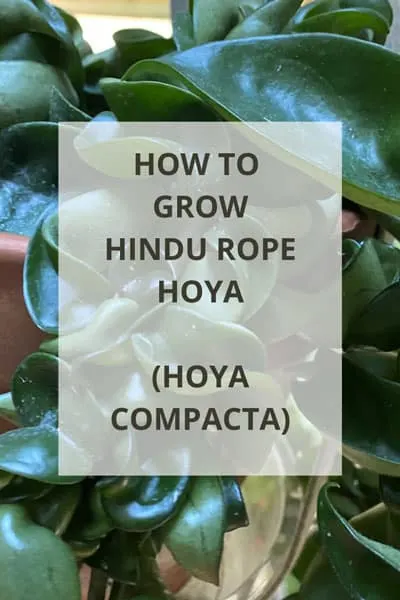
There are both plain green varieties as well as an incredible variegated version.
Here is the plain green version that is in bloom and is incredibly gorgeous in its own right!
And check out this variegated Hindu Rope. It’s absolutely stunning! I love the yellow and pinkish variegated leaves.
Table of Contents
HINDU ROPE HOYA CARE
1. LIGHT
These plants need quite a bit of light in order to really do their best. They are really slow growers, so if you are impatient, I would recommend purchasing a large plant to start with!
Even in great lighting conditions, they may only grow a few inches a year. For best growth, they need a few hours of sun every day. A few hours of morning sun, or afternoon sun would be preferable.
If you live in areas with really strong sun, try and avoid mid-day sun. Also, keeping these plants in full sun all day may cause the foliage to bleach out and turn pale. Partial sun will result in much better leaf color.
I have my own plant hanging right under a skylight in my sunroom and it receives some direct sun.
Having enough light is also important for flowering, and Hindu Rope Hoya has the characteristic, fragrant Hoya flowers. Aren’t they gorgeous?
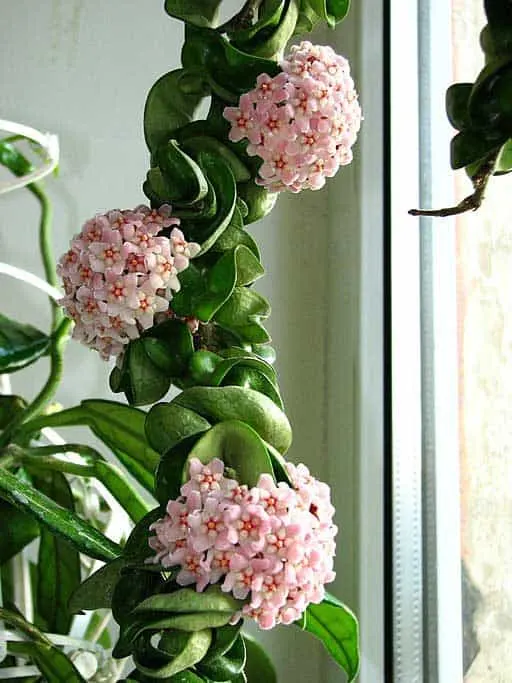
If you keep your plant in darker conditions, not only will you be disappointed with really slow growth (they are already slow growing to begin with, even in great light!) but they will also likely never flower.
2. WATERING and FERTILIZER
Watering is an important aspect of growing Hoyas. Always water thoroughly and moisten all of the soil, let excess water drain out, and don’t allow your plant to sit in water.
Keeping plants wet for long periods of time will encourage root rot in Hoyas, so be sure to allow your soil to go completely dry in between watering.
Hoyas are epiphytic plants, meaning that they grow on other plants (such as on tree trunks or branches), so they go through periods of being completely soaked, but then dry out quickly in between.
Keeping this in mind is important to understand their care!
If you are away from home a lot or travel a lot for weeks at a time, Hoyas are ideal! They can easily go 2-3 weeks without any sign of stress in most cases.
As far as fertilizing, refrain from using fertilizer in the winter when growth has stopped or is very slow, but I do fertilize my Hoyas the rest of the year.
My favorite all-purpose houseplant fertilizer that I use is called Dyna-Gro Grow.
It is simply amazing stuff. It is urea-free so you won’t burn your plants if you use it per the instructions on the label.
It is also a premium fertilizer that has all the macro and micro nutrients that plants need for growth. I’ve achieved great results and you can too with a consistent regiment!
I can’t recommend Dyna-Gro Grow enough. I use it for all my houseplants except succulents.
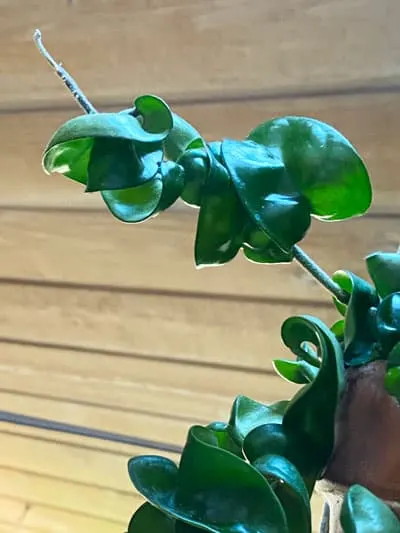
3. SOIL
Hoyas like an airy soil that dries out quickly. I would recommend using two parts of your favorite potting soil (I like Miracle Gro or Espoma potting mixes) to which you would add 1 part of an amendment. You can easily find everything on Amazon.
To the two parts of soil, mix in one part of perlite, pumice or even orchid bark. Depending on what I have handy, I may change what I use. The important part though is that you want excellent drainage.
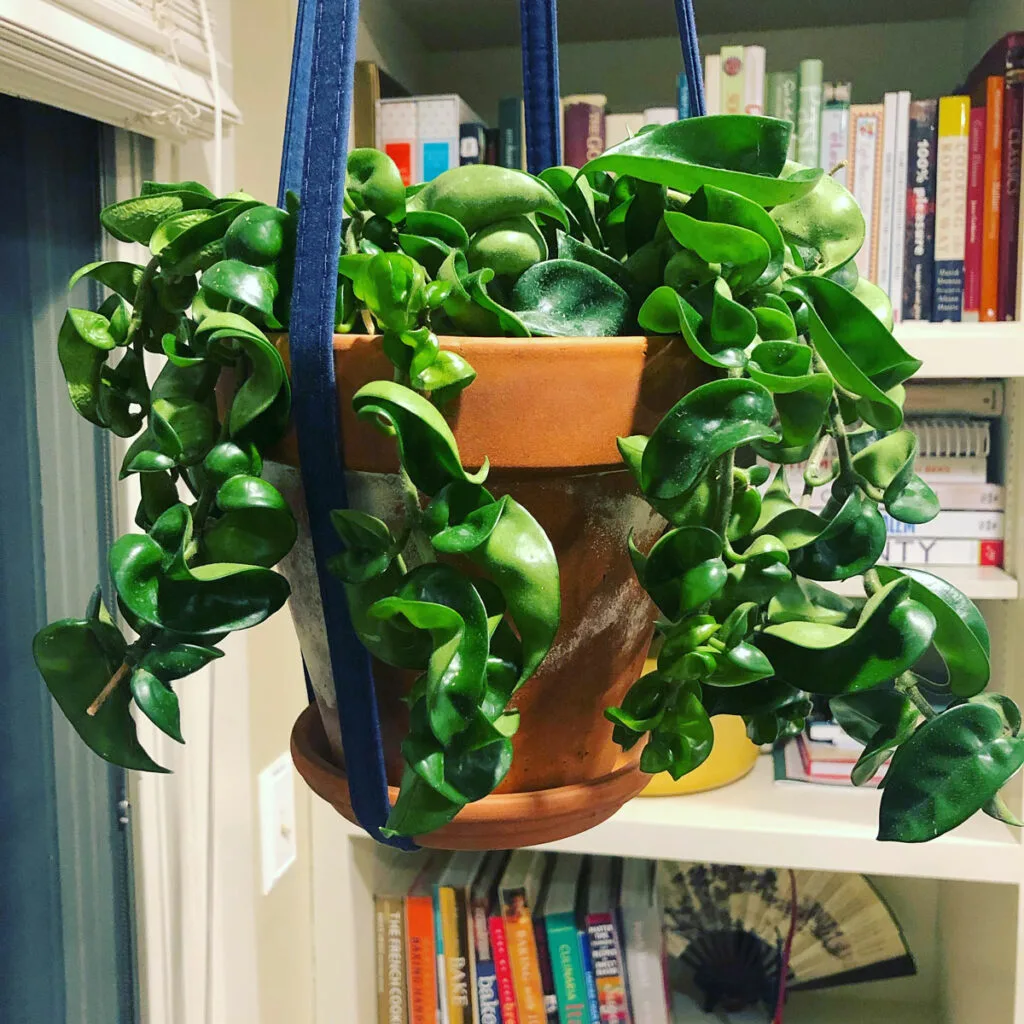
If you want an amazing mix to use right out of the bag, check out the amazing Hoya soil blend from Oh Happy Plants. This is an amazing mix and you will get 10% off at checkout automatically if you use my link.
4. TEMPERATURE and HUMIDITY
Hindu Rope Hoyas prefer minimum temperatures of at least 60F and above, with warmer daytime temperatures.
Most hoyas grow in warm and humid tropical regions. (There are some that grow in higher elevations like Hoya linearis, but the majority of Hoyas like it warmer).
Like any epiphyte, Hoyas like high humidity and the plants actually absorb moisture from the air. That being said, they are tolerant of average indoor humidity, but if you can increase humidity, it is absolutely helpful!
Be sure to check out my blog post on the best ways to
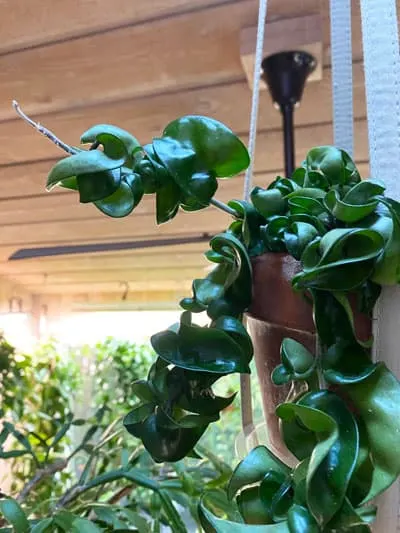
5. POT SIZE AND TYPE
Pot size and type are both very important when growing any Hoya. Remember that these plants are epiphytes and need to be able to dry out quickly in between watering.
Don’t make the mistake of overpotting these plants. They can live happily in the same pot for years and they like to be root bound. In fact, this also is a contributing factor in encouraging them to bloom (having enough light is probably the most important factor though).
When you do move to a bigger pot, only go up one size. For example, if you have one in a 4 inch pot, don’t go any larger than a 6 inch pot.
If it’s time for you to repot, be sure not to miss my Hoya repotting guide where I detail 3 important steps with photos, so you can be successful!
As far as the type of pot goes, I like to grow my hoyas in terra cotta (clay) pots when I can. But you can grow in different types as long as you adjust your watering.
Be sure not to miss my guide on choosing the best pot for Hoyas.
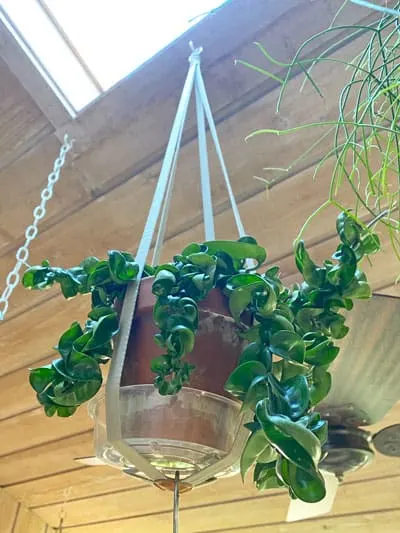
Terra cotta pots dry out very quickly and this is so important to encourage a healthy root system for your Hoya. If you’d like to learn more about these pots, check out my blog post about the pros and cons of terra cotta pots.
6. PESTS
Because of the crinkly leaves, dealing with pests can be tricky with these plants. Just take a look at the places they can hide!
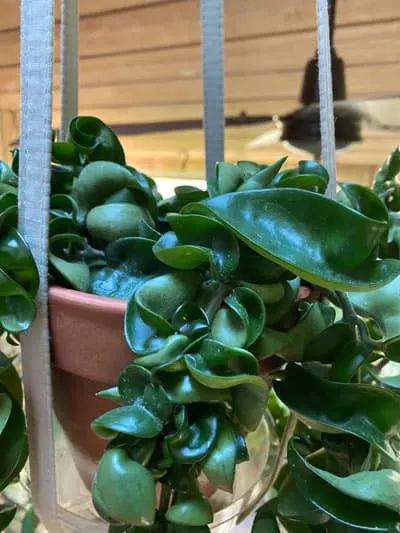
Hindu rope Hoyas are very prone to mealybugs and it can be tricky to detect them at first because they have so many places to hide in the contorted leaves.
As soon as you detect them, start a spraying regimen.
I would recommend using insecticidal soap on a weekly basis. In the middle of each week in between spraying, be sure to rinse the plant off to remove any residue so that it doesn’t harm the plant.
Keep repeating weekly even after you don’t see any mealy bugs anymore. This will ensure that they are gone.
You’ll want to treat your plant not only for the sake of your Hoya, but also so the mealy bugs don’t spread to your other houseplants. Pests can quickly go out of control when left unchecked!
You can easily purchase insecticidal soap easily on Amazon and I always have one of them handy so I can use when needed.
These are both safe and naturally derived products, but please be sure to use it according to the label.
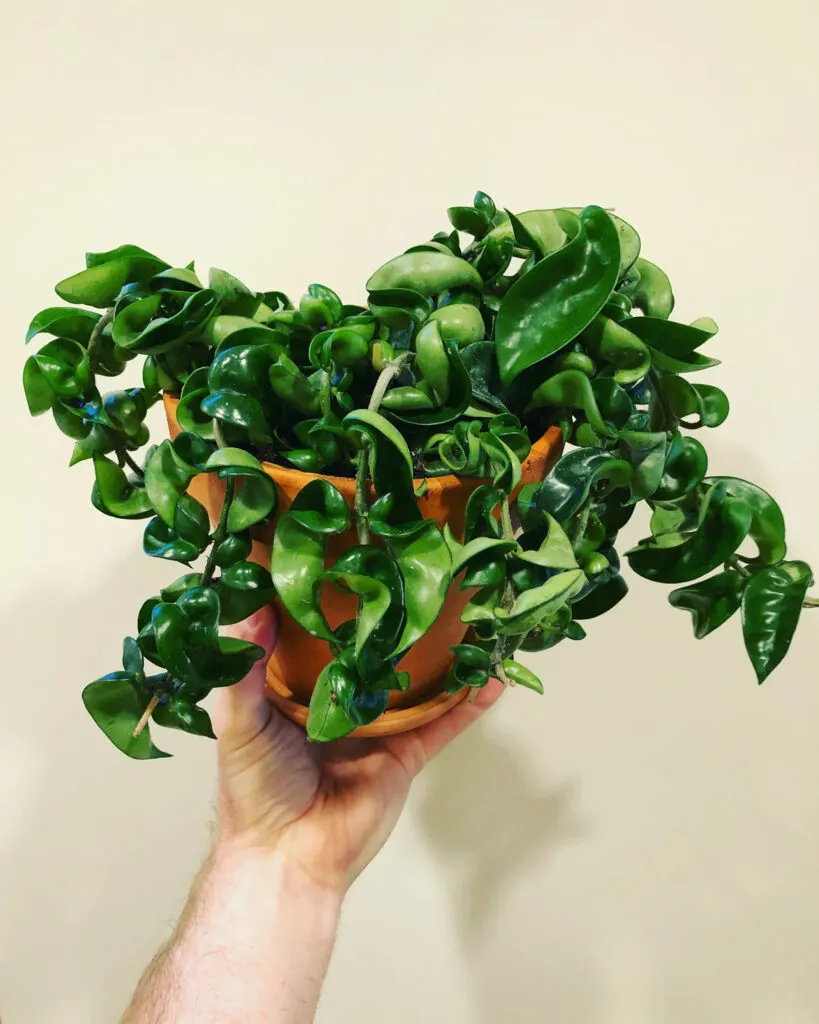
7. PROPAGATION
Propagation is simple. Simply take a cutting that has 3 or 4 leaves. Take the bottom leaf off, and place it right into a small pot of soil.
If you want a fuller plant, place multiple cuttings in the same pot.
It helps to keep the soil relatively moist as rooting is occurring. Keeping them in a warm area and increasing humidity will also speed the process up.
You may want to consider placing your rooting cuttings in a clear plastic bag to keep the humidity high until your cuttings are rooted.
HOYA TOXICITY
Hindu rope plant is non-toxic to cats and dogs according to the ASPCA.
HINDU ROPE PLANT PROBLEMS & QUESTIONS
What are some common names for Hoya carnosa ‘Compacta’?
Some common names that this plant goes by include tortellini plant, hindu rope plant, Krinkle Kurl, porcelain flower, and wax plant.
Hindu rope plant wrinkled leaves?
Wrinkled leaves on your hindu rope plant can be caused by various things. If your soil has gone bone dry for too long, it can result in wrinkled leaves. Promptly give your plant a good, thorough watering and it will recover in time.
In addition, it can also be caused by your potting mix staying wet for too long. Hoyas like to dry out in between watering, so if you’re plant has stayed wet for too long, has been sitting in water, or is it poorly draining soil, your plant may have suffered from root rot.
Hindu rope plant yellow leaves?
Yellow leaves can be caused by a variety of things. Most often though, it is caused by extremes in soil moisture. Keeping your potting mix too dry for too long will cause the lower leaves of your hindu rope plant to turn yellow.
If your plant has stayed wet for a long time, particularly if your potting mix is not well draining and porous enough, this can encourage root rot to set in and also cause yellow leaves to occur.
Why is my Hindu rope plant not growing?
To be clear, this is a pretty slow growing plant! But if your plant has not budged at all in several months to a year, consider increasing light. Once your plant starts to grow, you can also fertilize and this will also help your plant along.
Why is my Hindu rope plant not flowering?
Having enough light is the top reason why your plant is not flowering. Give your Hindu rope at least some direct sun, or even bright grow lights, in order to help encourage it to bloom.
Some other important factors include keeping your Hoya root bound will also help, as will a dry period of a few weeks right before Spring time.
Hoya carnosa vs. compacta?
Hindu rope plant, or Hoya carnosa ‘Compacta’ is actually a cultivar of the Hoya carnosa species. Many times you will see it called Hoya compacta, but the technically correct name is Hoya carnosa ‘Compacta’.
OTHER HOYAS TO GROW
Crazy about Hoyas? Check out my other blog posts on other amazing Hoyas that you can grow!

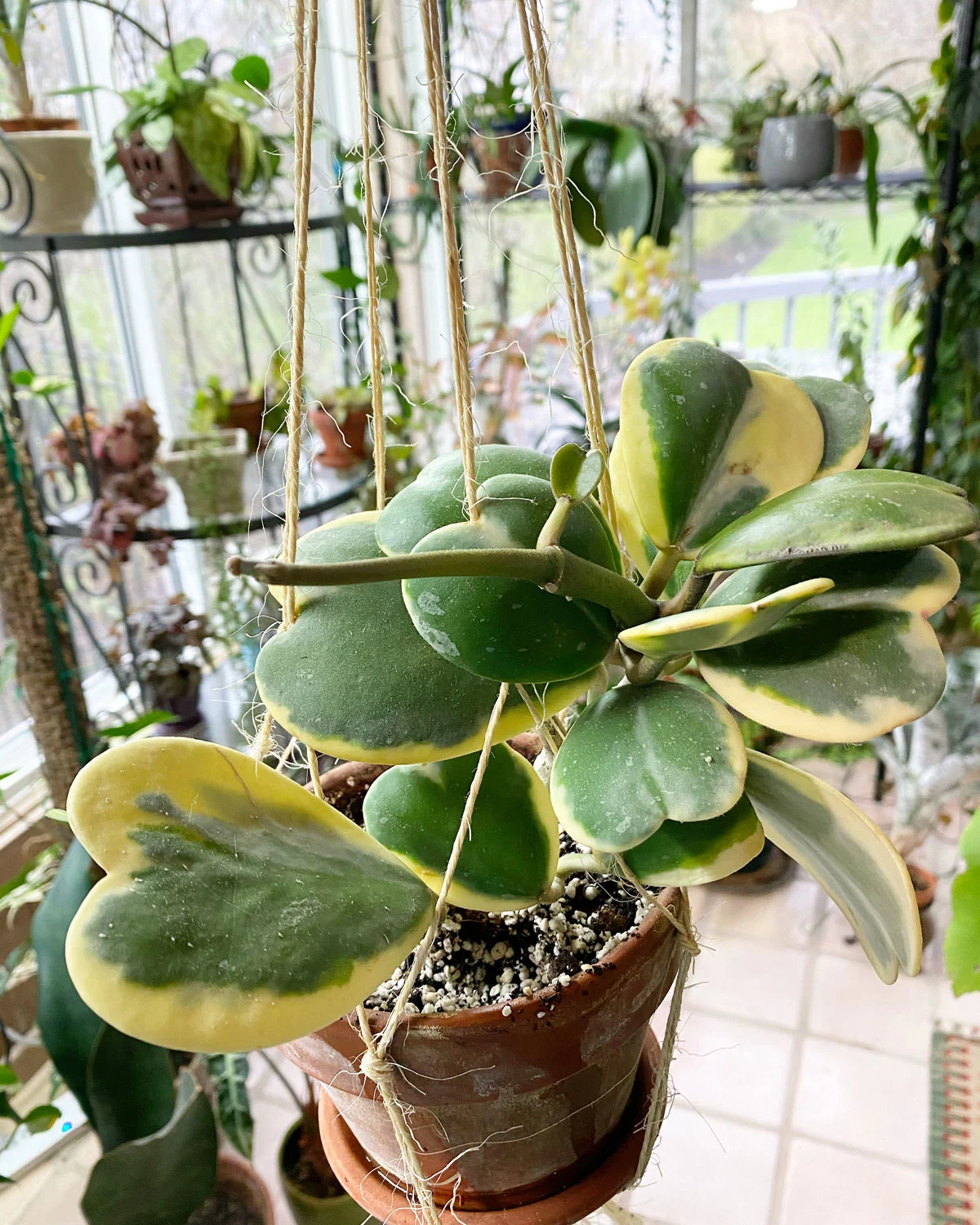
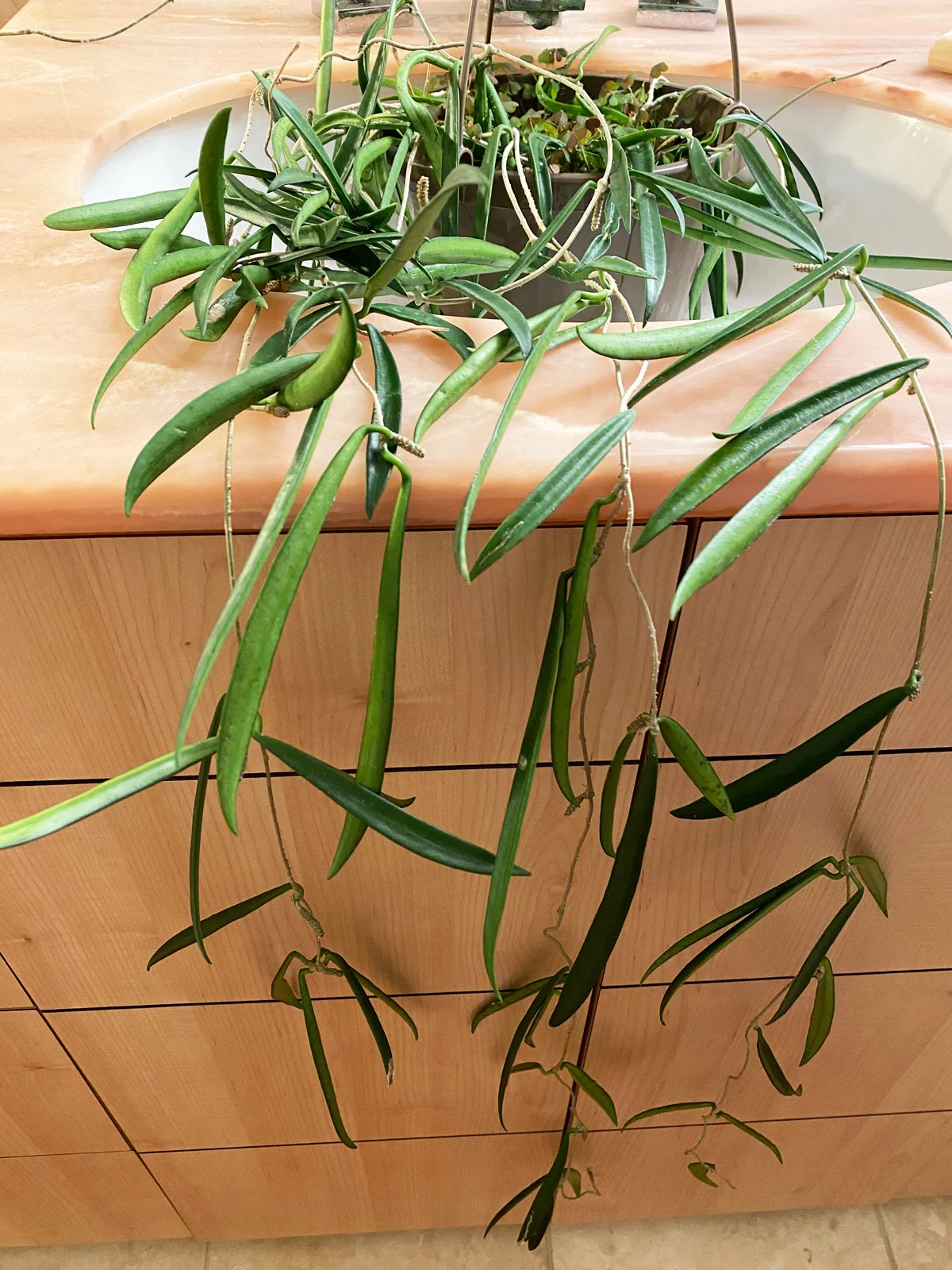
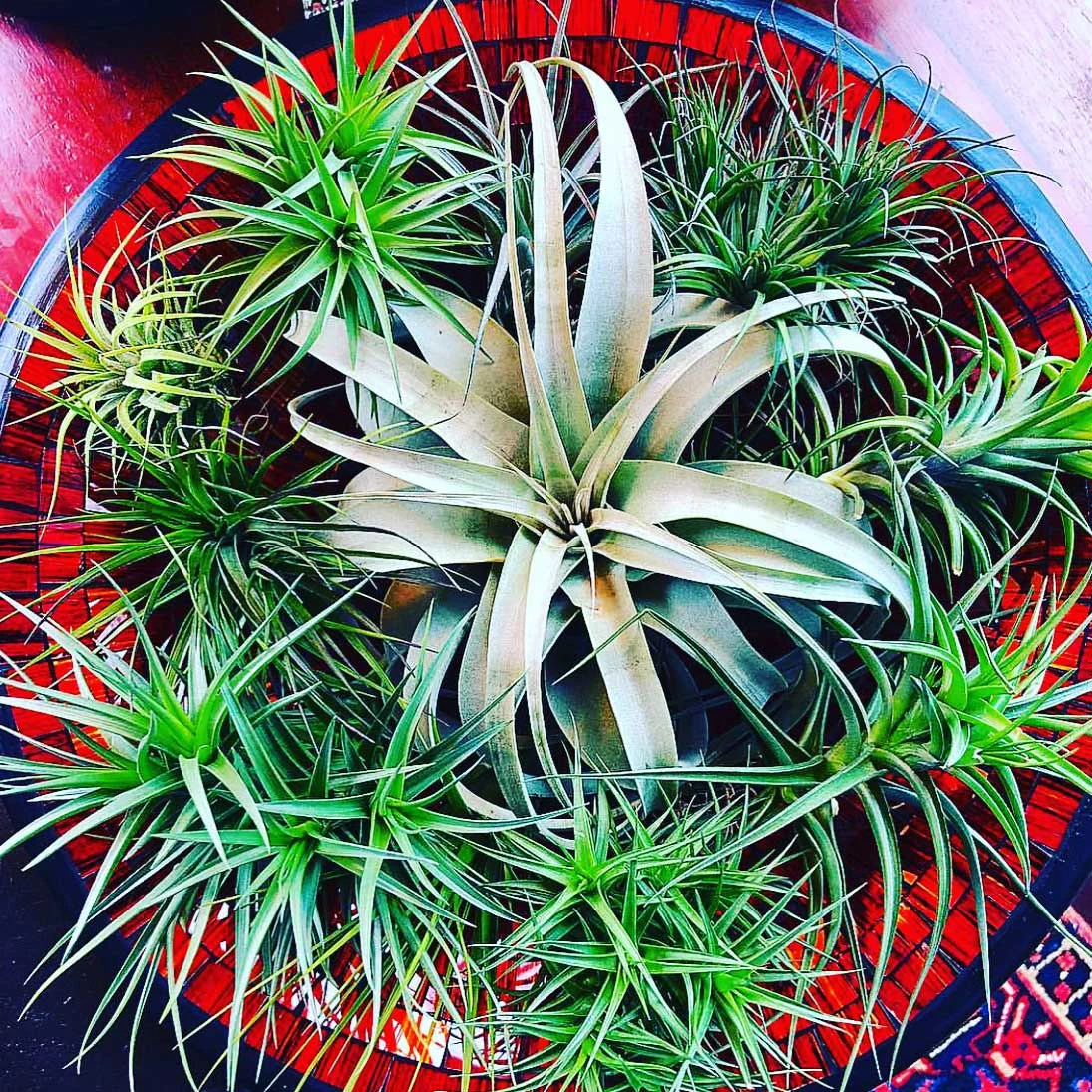
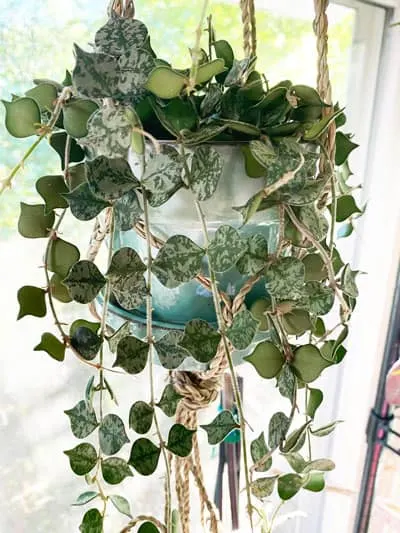
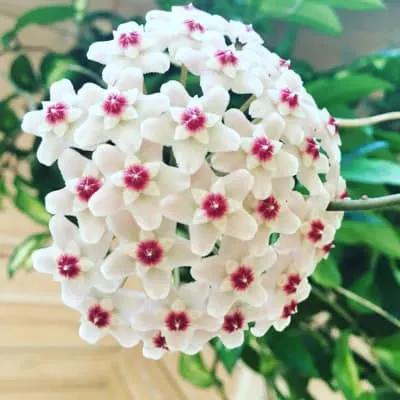
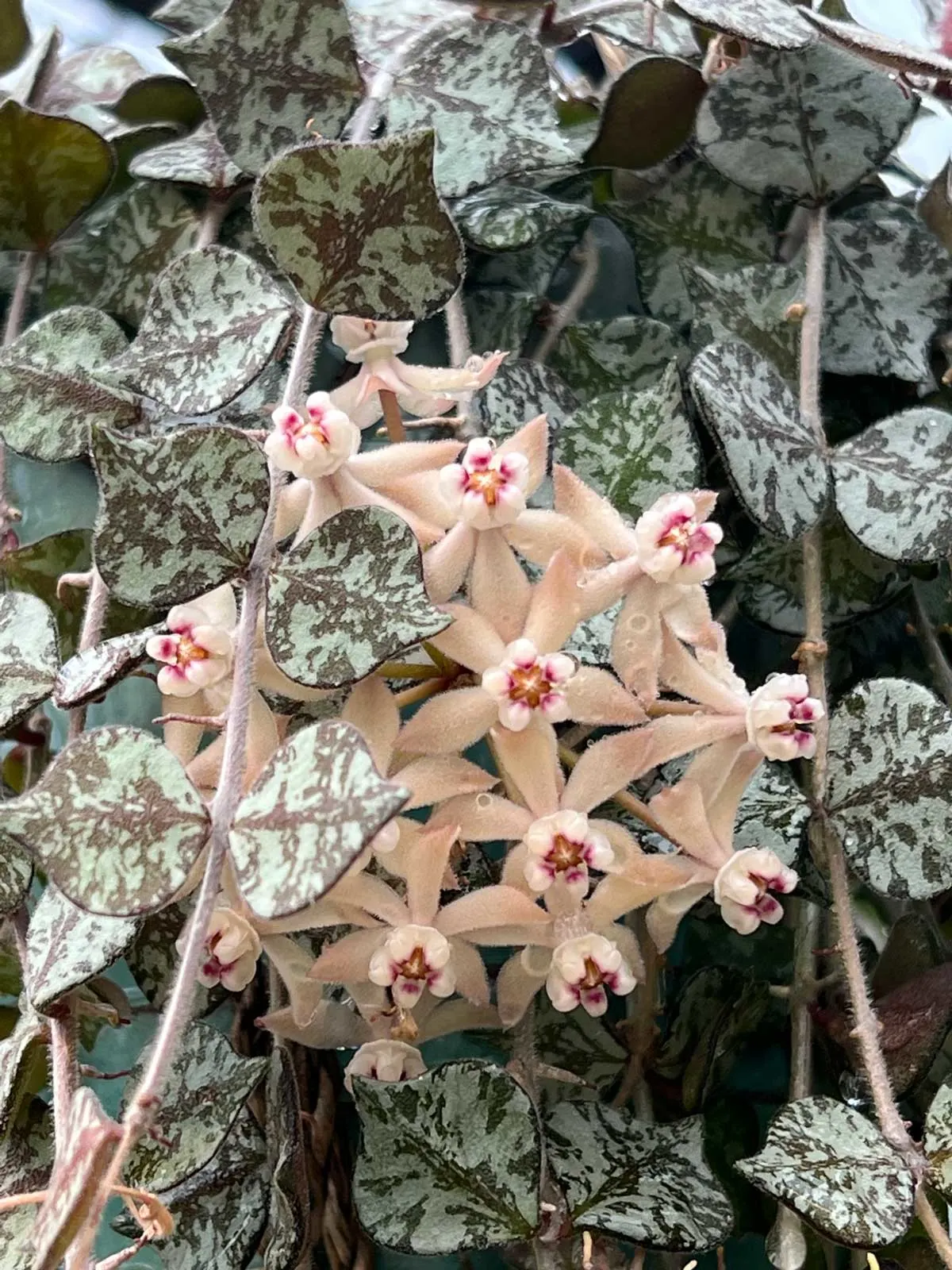
Paula
Monday 5th of June 2023
My variegated Hindu Rope has only one rope and it is fairly old. I love it so much that I am afraid to try to propogate. it has never been repotted.
Lyn
Saturday 20th of May 2023
I have two questions for you. First I have a plant that is probably about 26 years old. It was started from another plant my Mom had. I have subsequently taken many clippings to share with others and started a second one for myself with it. The second one I have is doing wonderfully is approx 36in long and flowers routinely. Years ago I almost lost the originally when it died back to only one leaf...but it came back and is now actually 36in long as well and still I have sucdessfully started many clippings from it. The only issue is it has never flowered since it died back to one leaf and came back. Is there something I can do to help with this or should I be resigned to using this plant as my "gifting" plant? My second questions is do you recommend using a moss growing trellis for hoyas?
Thanks for all your great info.
Lyn
Saturday 20th of May 2023
@Raffaele, Yes same light. They are actually in the same window.
Raffaele
Saturday 20th of May 2023
Is your plant in the same light that the other one was when it was blooming? If not, increase the light. They need a few hours of direct sun to really flower well.
Kathy
Saturday 4th of February 2023
Thank you for all this information. I'm proud to say my hoya is about 45 years old. I have not had huge success with starting new plants though. My children would like me to start their own. I have been trying in water, not soil. I will certainly try the soil and bag.
Raffaele
Saturday 4th of February 2023
You're very welcome Kathy! You can also place it on top of a propagation mat that heats from the bottom. It speeds up rooting quite a bit :-)
Patricia Harmon
Tuesday 27th of September 2022
One vine on my rope plant is yellowish, I know not over watered. It is getting very wrinkly should I bottom water? I know from this article it is in to big a pot would this cause this? Make me anxious they are costly. Mine has about 6-8 inch ropes please help.
Raffaele
Monday 3rd of October 2022
Hi Patricia! Bottom watering won't really fix anything. How long have you had the plant? Is it getting enough light? I'd have to see a photo really to better advise. It could be caused by a variety of things and I'd need more details.
Terez
Saturday 3rd of September 2022
I have a rope plant for two years now and it’s showing steady growth. One shoot came much longer than the other two in the pot and now it’s really longer!! Can I cut it and root it then place back in the pot for a filler plant? Will the cut shoot still continue to grow is what I’m worried about. I don’t want to damage it!
Raffaele
Monday 5th of September 2022
Hi Terez! You can certainly do that, but I wouldn't cut it if the stem is still pretty leafless. Many Hoyas will grow new vines and the leaves will come in a little later. It's better to wait until you have some leaves. It will grow back if you cut it, so no worries there!